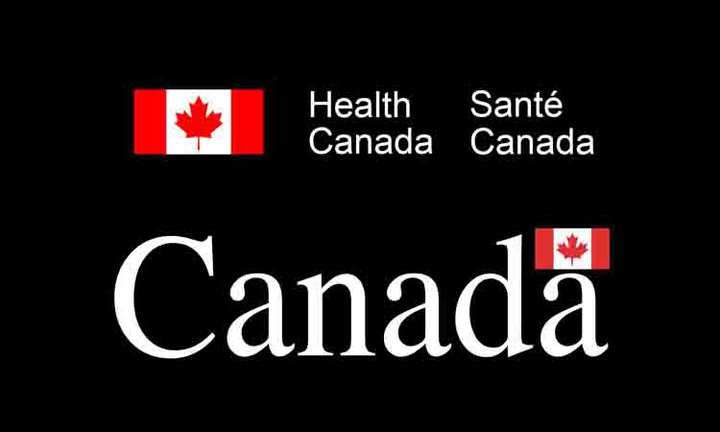The Public Health Agency of Canada is collaborating with provincial public health partners, the Canadian Food Inspection Agency, and Health Canada to investigate an outbreak of Salmonella infections occurring in five provinces.
At this time, the source of the outbreak has not been identified, but health and food safety partners are investigating what is making people sick. The outbreak is ongoing, as recent illnesses continue to be reported to the Public Health Agency of Canada.
Salmonella bacteria are found naturally in the intestines of animals, reptiles and birds. The bacteria are most-often transmitted to people when they eat contaminated foods. Contaminated foods often come from animal sources, such as poultry, beef, milk or eggs, but can also include fruits, vegetables, and herbs.
In an effort to prevent further illnesses, Canadians are advised to wash their hands frequently and use safe food handling practices to prevent Salmonella infections.
As of July 24, 2020, there have been 59 confirmed cases of Salmonella Newport illness linked to this outbreak in the following provinces: British Columbia (23), Alberta (31), Manitoba (3), Ontario (1), and Prince Edward Island (1). Individuals became sick between mid-June and mid-July 2020. Information is available for 28 illnesses. Out of 28 people, six individuals have been hospitalized. No deaths have been reported. Individuals who became ill are between 11 and 77 years of age. The majority of cases (54%) are female.
The United States Centers for Disease Control and Prevention (U.S. CDC) is also investigating an outbreak of Salmonella Newport illnesses that have a similar genetic fingerprint to illnesses reported in this outbreak. Investigators in Canada and the U.S. are collaborating to exchange information to identify the source of the outbreak.
It is possible that more recent illnesses may be reported in the outbreak because there is a period of time between when a person becomes ill and when the illness is reported to public health officials. For this outbreak, the illness reporting period is between two and four weeks.
Anyone can become sick with a Salmonella infection, but children aged 5 years and under, older adults, pregnant women or people with weakened immune systems are at higher risk for contracting serious illness.
Most people who become ill from a Salmonella infection will recover fully after a few days. It is possible for some people to be infected with the bacteria and to not get sick or show any symptoms, but to still be able to spread the infection to others.
It is difficult to know whether a product is contaminated with Salmonella because you can’t see, smell or taste it. To help prevent Salmonella infections, the Public Health Agency of Canada recommends following safe food handling tips. The following tips may help reduce your risk of getting sick, but they may not fully eliminate the risk of illness.
- Wash your hands with soap and warm water for at least 20 seconds before and after handling raw meat and fresh produce.
- Cook food to a safe internal temperature that has been checked using a digital thermometer.
- Always read and follow cooking instructions on the package of any food items.
- Keep raw food away from other food while shopping, storing, repackaging, cooking and serving food.
- Wash fresh produce thoroughly under fresh, cool, running water, even if you plan to peel them. This helps prevent the spread of any bacteria that may be present.
- Never rinse raw meat before using it because the bacteria can spread everywhere the water splashes, creating more of a safety hazard.
- Sanitize countertops, cutting boards and utensils before and after preparing food. Use a kitchen sanitizer (following the directions on the container) or a bleach solution (5 mL household bleach to 750 mL of water), and rinse with water.
- Use paper towels to wipe kitchen surfaces, or change dishcloths daily to avoid the risk of cross-contamination and the spread of bacteria, and avoid using sponges as they are harder to keep bacteria-free.
- Use one cutting board for produce, and a separate one for raw meat, poultry, fish and seafood.
- Place peeled or cut fruits and vegetables on a separate clean plate or in a container to prevent them from becoming cross-contaminated.
- If you have been diagnosed with a Salmonella infection or any other gastrointestinal illness, do not cook food for other people.
- Contact your local public health authority to report any food safety concerns at restaurants or grocery stores, or if you suspect food poisoning from a restaurant or other food establishments.
Symptoms of a Salmonella infection, called salmonellosis, typically start 6 to 72 hours after exposure to Salmonella bacteria from an infected animal, person or contaminated product.
Symptoms include:
- fever
- chills
- diarrhea
- abdominal cramps
- headache
- nausea
- vomiting
These symptoms usually last for 4 to 7 days. In healthy people, salmonellosis often clears up without treatment, but sometimes antibiotics may be required. In some cases, severe illness may occur and hospitalization may be required. People who are infected with Salmonella bacteria can be infectious from several days to several weeks. People who experience symptoms, or who have underlying medical conditions, should contact their health care provider if they suspect they have a Salmonella infection.
